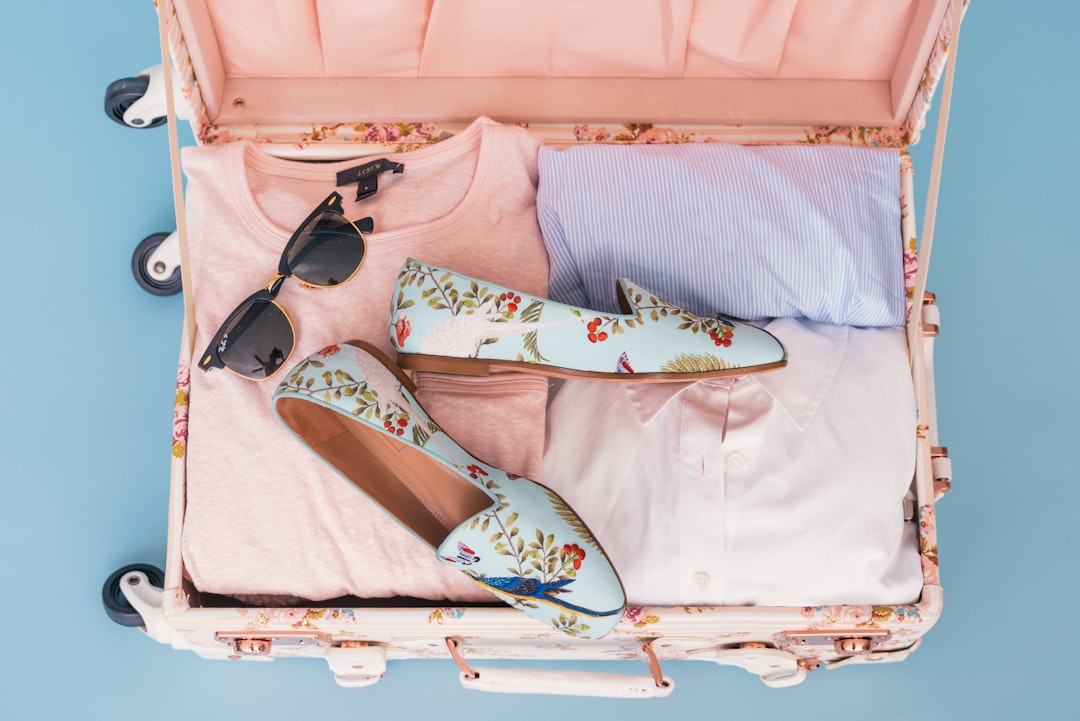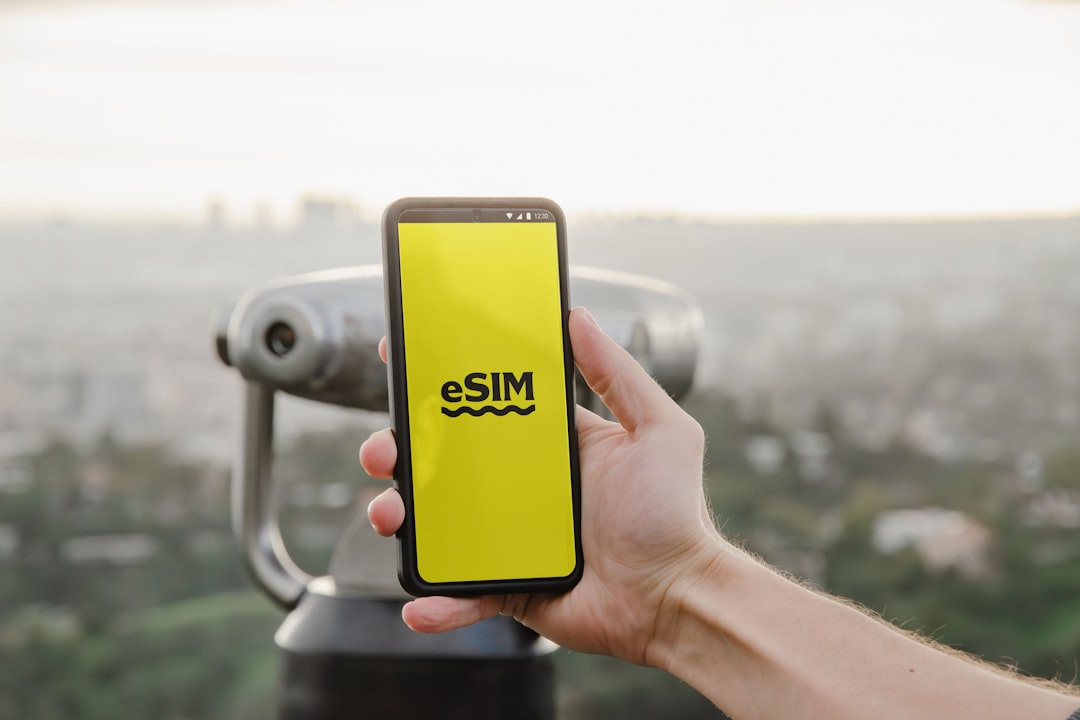Simple Gear Guides for Sustainable Digital Nomad Life

Introduction
Living a location‑independent life is a thrilling blend of freedom, adventure and responsibility. The digital nomad who embraces minimalism and sustainability knows that every item packed is a decision about impact, efficiency and comfort. This guide walks you through the essential gear categories, the criteria for choosing eco‑friendly alternatives, and practical packing strategies that keep your load light while supporting a greener world. By the end you will have a clear roadmap for building a versatile kit that travels with you from bustling cafés in Bangkok to remote co‑working spaces in the Andes, without compromising on performance or conscience.
Core Principles of Sustainable Packing
Pack Light, Pack Smart
The lighter your bag, the less fuel is burned on every flight, train or bus. Reducing weight also means fewer aches, faster mobility and more space for meaningful experiences. Focus on items that serve multiple purposes and can be repaired or repurposed.
Choose Low‑Impact Materials
Traditional travel gear often relies on petroleum‑based plastics, synthetic foams and unsustainable sourcing. Look for products made from recycled polyester, organic cotton, hemp, cork, bamboo or responsibly harvested wood. Certifications such as Bluesign, GOTS (Global Organic Textile Standard) and FSC (Forest Stewardship Council) are reliable signals of environmental responsibility.
Prioritise Durability and Repairability
A well‑built piece of gear that lasts a decade is far more sustainable than three cheaper items that need replacement each year. When durability is paired with modular design, you can replace worn parts instead of discarding the whole product.
Embrace the Circular Economy
Whenever possible, select gear that can be returned for recycling, refurbished or donated at the end of its life. Some brands offer take‑back programs or partner with NGOs to up‑cycle used equipment.
Minimalism as a Lifestyle Choice
Minimalism is not about deprivation; it is about intentionality. By limiting your possessions, you free mental space for creativity, relationships and personal growth. This mindset guides every gear decision you make.
Essential Gear Categories
Below is a breakdown of the nine gear categories that cover most digital nomad needs. For each, we discuss the function, sustainable material options, and a short list of recommended items.
Computing and Connectivity
- Laptop – Choose a model with a long battery life, energy‑efficient processor and a chassis made from recycled aluminium. Brands that publish a carbon‑footprint report and offer a trade‑in program are preferable.
- Portable Monitor – A 13‑inch USB‑C monitor reduces the need for a larger workstation. Look for screens with low‑power LED backlighting and recyclable frames.
- Power Bank – Opt for high‑capacity lithium‑polymer units built with recycled plastics. Solar‑compatible models add renewable charging options.
- Travel Router – Compact routers that support VPN and multiple device connections help you stay secure on public Wi‑Fi. Models with firmware that can be updated extend longevity.
- Cable Management – A set of reusable Velcro straps and a braided, tangle‑free USB‑C cable made from recycled nylon keep your workspace tidy.
Backpacks and Luggage
- Travel Backpack – A 30‑45 L pack with a weather‑proof shell, ergonomic suspension and a frame constructed from recycled aluminum offers balance between capacity and comfort. Look for a modular interior that lets you add or remove packing cubes.
- Carry‑On Suitcase – Hard‑shell cases made from recycled polycarbonate are lightweight and protect fragile gear. Soft‑sided alternatives in recycled polyester provide flexibility.
- Daypack – A 15‑20 L foldable daypack in organic hemp or recycled nylon is perfect for day trips, market runs or impromptu hikes.
Clothing Essentials
- Base Layers – Merino wool sourced from farms that practice ethical shearing is naturally odor‑resistant and biodegradable. A single long‑sleeve top and a pair of leggings cover most climates.
- Mid‑Layers – A fleece jacket made from recycled PET bottles offers warmth without bulk. Choose a design with zip‑off sleeves for adaptable layering.
- Outer Shell – A waterproof, breathable jacket built with a PFC‑free membrane and recycled nylon keeps you dry while reducing microplastic runoff.
- Footwear – A versatile pair of trail‑ready shoes made from natural rubber and recycled canvas works for city walking and light trekking.
- Accessories – Pack a compact hat made from organic cotton, a set of reusable bamboo socks and a pair of silicone travel gloves for colder destinations.
Sustainable Office Tools
- Notebook – Recycled paper notebooks with a stone‑paper cover are sturdy and water‑resistant. Choose a refillable design to reduce waste.
- Pens – Refillable gel pens made from recycled plastic or biodegradable bamboo cartridges eliminate disposable plastic waste.
- Portable Keyboard – A foldable Bluetooth keyboard with an aluminium frame and a rechargeable battery saves desk space and reduces reliance on a laptop’s built‑in keyboard.
Health and Hygiene
- Toiletry Kit - A silicone travel bottle set that collapses flat minimizes plastic use. Look for bottles marked BPA‑free.
- Shampoo & Soap – Solid bars of shampoo, conditioner and body soap made from plant‑based ingredients avoid plastic packaging.
- Dental Care – A bamboo toothbrush with a replaceable head and toothpaste tablets reduces the need for tubes.
- First‑Aid – A compact kit that includes reusable gauze, biodegradable antiseptic wipes and a small supply of reusable bandages.
Kitchen and Food Prep
- Collapsible Water Bottle – Silicone bottles that fold to a few centimeters cut down on weight and space.
- Reusable Cutlery Set – Stainless steel or bamboo fork, spoon and knife housed in a small travel pouch.
- Food Storage – Beeswax wraps and reusable silicone bags replace single‑use plastics for snacks and leftovers.
- Portable Coffee Maker – A lightweight French press made from stainless steel and bamboo handles satisfies caffeine cravings without disposable pods.
Energy and Power
- Solar Charger – A foldable solar panel with a high conversion rate (over 22 %) that can charge phones, power banks and small laptops.
- LED Light – A rechargeable LED lantern with a dimmable setting and a durable, waterproof case provides illumination for late‑night work sessions.
- Universal Adapter – An adapter that includes USB‑C Power Delivery ports reduces the need for multiple chargers.
Travel Documentation and Security
- RFID‑Blocking Wallet – A slim wallet made from recycled leather or cork protects personal data from electronic theft.
- Travel Insurance Card – A printable, reusable card that stores policy information, emergency contacts and a QR code for quick access.
- Backup Storage – A compact SSD built from recycled aluminium, with hardware encryption, serves as an offline backup for important files.
Miscellaneous Tools
- Multi‑Tool – A stainless‑steel multi‑tool with a screwdriver, bottle opener and scissors eliminates the need for separate gadgets.
- Travel Sewing Kit – A small kit with biodegradable thread, a few needles and a repair patch for clothing.
- Compact Hammock – A lightweight, quick‑dry hammock made from recycled polyester is perfect for rest days in nature.
How to Evaluate Gear for Sustainability
When you encounter a product that looks promising, run it through this quick checklist. This systematic approach ensures you consider all environmental aspects before making a purchase.
- Material Origin – Is the primary material recycled, renewable or responsibly sourced? Look for certifications.
- Manufacturing Process – Does the brand disclose energy usage, water consumption or chemical treatments? Low‑impact processes are a plus.
- Longevity – Is the item designed for a 5‑10 year lifespan? Check warranty length and repair policies.
- End‑of‑Life Plan – Does the manufacturer offer a take‑back, recycling or up‑cycling program? If not, can you repurpose the item yourself?
- Packaging – Is the product shipped in minimal, recyclable or compostable packaging? Avoid excessive plastic.
- Carbon Footprint – Has the brand measured and disclosed its emissions? Some companies offset their shipping or production emissions.
- Social Responsibility – Are workers paid fair wages and work in safe conditions? Look for Fair Trade or similar badges.
If a product meets at least five of these criteria, it is a solid candidate for a sustainable nomad wardrobe.
Building Your Minimalist Packing List
The goal is to create a master list that can be customized for each trip, yet remains consistent enough to avoid overpacking. Below is a template that covers a typical two‑week stay in a temperate climate. Adjust quantities based on personal needs and destination specifics.
Core Tech Bundle
- Laptop with charger
- Portable monitor (optional)
- Power bank (10,000 mAh minimum)
- Travel router
- Universal adapter with USB‑C PD
- Cable management set
- External SSD (500 GB minimum)
Clothing Capsule
- 2 merino base layer tops
- 1 merino base layer leggings
- 1 recycled‑polyester fleece jacket
- 1 waterproof outer shell
- 2 casual shirts (organic cotton)
- 1 pair of quick‑dry travel pants
- 1 pair of lightweight shorts
- 5 pairs of bamboo socks
- 1 pair of trail shoes
- 1 pair of flip‑flops (for showers)
- 1 hat (organic cotton)
- 1 set of underwear (4‑5 pairs, quick‑dry)
Office Essentials
- Recycled paper notebook
- Refillable pen
- Foldable Bluetooth keyboard
- Portable mouse (optional)
Hygiene Kit
- Silicone travel bottles (set)
- Solid shampoo bar
- Solid body soap bar
- Bamboo toothbrush + toothpaste tablets (5‑7)
- Travel towel (micro‑fiber, quick‑dry)
- Small first‑aid kit
Food & Drink Gear
- Collapsible water bottle
- Reusable cutlery set
- Beeswax wraps (2‑3)
- Silicone storage bags (2‑3)
- Portable French press
Energy & Light
- Solar charger (foldable)
- LED lantern (rechargeable)
- Spare battery packs (if needed)
Documentation & Security
- RFID‑blocking wallet
- Travel insurance card
- External SSD (backup)
- QR‑code emergency card
Miscellaneous
- Multi‑tool
- Travel sewing kit
- Compact hammock (optional)
- Small reusable shopping bag (organic cotton)
Packing Technique
- Lay out all items on a clean surface. Visually confirm each piece serves a purpose or can be repurposed.
- Group by category. This helps you locate items quickly during the trip.
- Roll clothing instead of folding to maximize space and reduce wrinkles.
- Use compression cubes made from recycled nylon for bulkier items like jackets.
- Place heavy items (laptop, SSD) close to the back panel of the backpack for better weight distribution.
- Fill gaps with smaller items such as cables, chargers and socks.
- Close all compartments and test the bag’s balance by wearing it for a minute. Adjust if one side feels heavier.
Sustainable Travel Habits to Complement Your Gear
Gear is only one side of the sustainability equation. How you use and manage it on the road greatly influences your overall impact.
Power Conservation
- Turn off devices when not in use. Enable sleep mode on laptops after 5 minutes of inactivity.
- Use low‑power settings for screens and keyboards.
- Schedule charging during daylight hours when you can rely on solar power.
Waste Reduction
- Refill water bottles from tap or filtered sources rather than buying bottled water.
- Carry a reusable coffee cup to cafés that accept it.
- Dispose of solid soap remnants responsibly. Many hostels provide soap reuse stations.
Local Sourcing
- Buy locally made clothing or accessories when you need a replacement. This supports the community and reduces shipping emissions.
- Choose eco‑friendly accommodations that prioritize energy efficiency, recycling and water conservation.
Repair Over Replace
- Carry a small repair kit (sewing kit, adhesive patches, screwdriver). Many minor issues can be fixed on the spot.
- Learn basic maintenance for your laptop (cleaning ports, updating firmware) and footwear (re‑gluing soles).
Community Engagement
- Share gear with fellow nomads. Organize gear swaps or lending circles in co‑working spaces.
- Document your sustainable practices on blogs or social media to inspire others and create accountability.
Real‑World Examples
Case Study: Two‑Week Stay in Lisbon
- Gear Used: 35 L recycled‑polyester backpack, 13‑inch USB‑C monitor, 10 000 mAh solar‑compatible power bank, merino base layers, recycled fleece, waterproof shell, reusable coffee cup.
- Carbon Savings: By opting for a solar charger instead of a grid‑powered one, the traveler reduced electricity use by an estimated 2 kWh, saving roughly 0.9 kg CO₂.
- Waste Avoided: No single‑use plastic bottles were purchased; all water was refilled from tap using a collapsible bottle.
- Cost Efficiency: The reusable coffee cup saved an average of €1.20 per day, totaling €16.80 over two weeks.
Case Study: Remote Work in the Peruvian Andes
- Gear Used: 30 L hemp daypack, lightweight laptop with aluminium chassis, recycled‑polyester fleece, biodegradable soap, bamboo toothbrush, solar panel (10 W), LED lantern.
- Impact: The traveler relied solely on solar power for device charging, eliminating the need for local electricity use. The biodegradable soap left no harmful residues in mountain streams.
- Community Benefit: The nomad organized a gear repair workshop for other travelers, teaching basic laptop screen cleaning and shoe sole replacement.
Frequently Asked Questions
Can I travel with a single backpack instead of a separate daypack?
Yes, if the main pack has a detachable compartment or a front pocket that can serve as a daypack. Look for modular designs that allow you to separate the inner section.
Is recycled polyester really better for the environment?
Recycled polyester reduces the need for virgin petroleum, saves energy and cuts down on landfill waste. It is not perfect, but it is a significant improvement over new synthetic fibers.
How do I clean my merino base layers without harming them?
Use a gentle, wool‑safe detergent in cold water, and lay flat to dry. Avoid tumble drying as high heat can shrink the fibers.
What if I need a larger wardrobe for a longer stay?
Adopt a rotating system: pack a base set for the first week, then wash and reuse items. Add a few extra pieces made from the same sustainable materials if necessary.
Are solar chargers reliable in cloudy climates?
Modern solar panels can generate power in low light conditions, though charging will be slower. Pair the solar panel with a high‑capacity power bank to store energy on sunny days.
Tips for Maintaining Your Gear Over Time
- Regular Inspection: Check seams, zippers and straps before each trip. Small repairs now prevent larger failures later.
- Proper Storage: When not traveling, store items in a cool, dry place. Use breathable bags for clothing to avoid mildew.
- Cleaning Routine: Follow manufacturer instructions. For synthetic fabrics, use eco‑friendly detergents that are phosphate‑free.
- Software Updates: Keep laptops and routers up to date to extend device life and improve security.
- Battery Care: Avoid leaving lithium batteries at extreme temperatures. Store at 40‑60 % charge if not in use for several months.
Building a Sustainable Nomad Community
Your personal gear choices can ripple outward when shared with a community of like‑minded travelers. Here are ways to foster collective impact:
- Create a Gear Library: Set up a small lending shelf in a co‑working space where members can borrow rarely used items such as solar chargers or portable monitors.
- Host Swap Events: Organize quarterly meet‑ups where nomads exchange gently used gear. This reduces the demand for new production.
- Publish Reviews: Write honest, detailed reviews of sustainable products on forums or blogs. Highlight both strengths and areas for improvement.
- Collaborate with Brands: Reach out to eco‑friendly manufacturers and propose partnership programs that offer discounts to community members in exchange for feedback and exposure.
- Educate Newcomers: Develop a short onboarding guide for fresh arrivals, covering essential gear, local recycling facilities and best practices for low‑impact living.
Final Thoughts
Sustainable digital nomadism is a continuous practice of mindful selection, responsible use and community engagement. By focusing on lightweight, durable and eco‑conscious gear, you lower your carbon footprint, reduce waste and free up mental space for creativity and connection. The guide above provides a solid framework for curating a kit that supports any location‑independent adventure while honoring the planet.
Remember, the journey toward sustainability is not about perfection but about progress. Each item you choose, each habit you adopt, and each story you share adds to a collective movement that reshapes how we travel, work and live. Pack wisely, travel lightly, and let your gear be a testament to a future where freedom and responsibility walk hand in hand.
Random Posts

Smart Packing Hacks for Long Term Travel
Learn to pack light for months of travel by shifting your mindset, choosing multi-use items, and planning on-the-go replacements. These practical hacks turn bulky baggage into a flexible, organized system so you can focus on the adventure
3 weeks ago

Beginner’s Guide to Setting Up a Mobile Home Office
Learn to create a functional, ergonomic mobile office with the right gear, reliable internet, and space-saving setups so you stay productive wherever the road takes you.
2 months ago

Where to Set Up Shop Abroad and What Gear to Pack
Discover the top nomad hotspots from Bali to Lisbon, learn what infrastructure matters, and get a practical packing list so you can work anywhere without missing a beat.
1 month ago

Nomad Accommodation Secrets Finding Home Anywhere
Treat each stay as a flexible tool: ask what minimum you need to stay productive, how much budget you can spend, and which culture or lifestyle you seek. Align these three questions to turn chaos into a clear home-anywhere plan.
2 months ago

Living Safely as a Digital Nomad in Portugal with Essential Lifestyle Tips
Discover essential safety and lifestyle tips for digital nomads in Portugal, showing how to stay secure, healthy and productive while enjoying Lisbon, Porto, the Algarve and beyond
1 month ago
Latest Posts

Essential Software Every Remote Professional Should Use
Master remote work with essential tools: instant messaging like Slack, high definition video calls such as Zoom, and asynchronous voice apps. Streamline communication, stay connected and boost productivity.
1 day ago

Mastering Remote Work Productivity for Digital Nomads and Freelancers
Learn proven habits, tools, and tactics that help digital nomads and freelancers stay focused, deliver quality work, and maintain a sustainable lifestyle while traveling the world.
1 day ago

Tech‑Friendly European Towns Perfect for Remote Living
Discover Europe’s best small towns where fast internet, affordable living and vibrant tech communities let you work remotely while soaking up historic charm, lakeside views or mountain air.
1 day ago